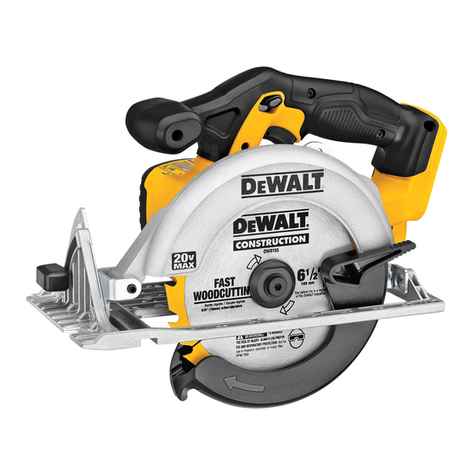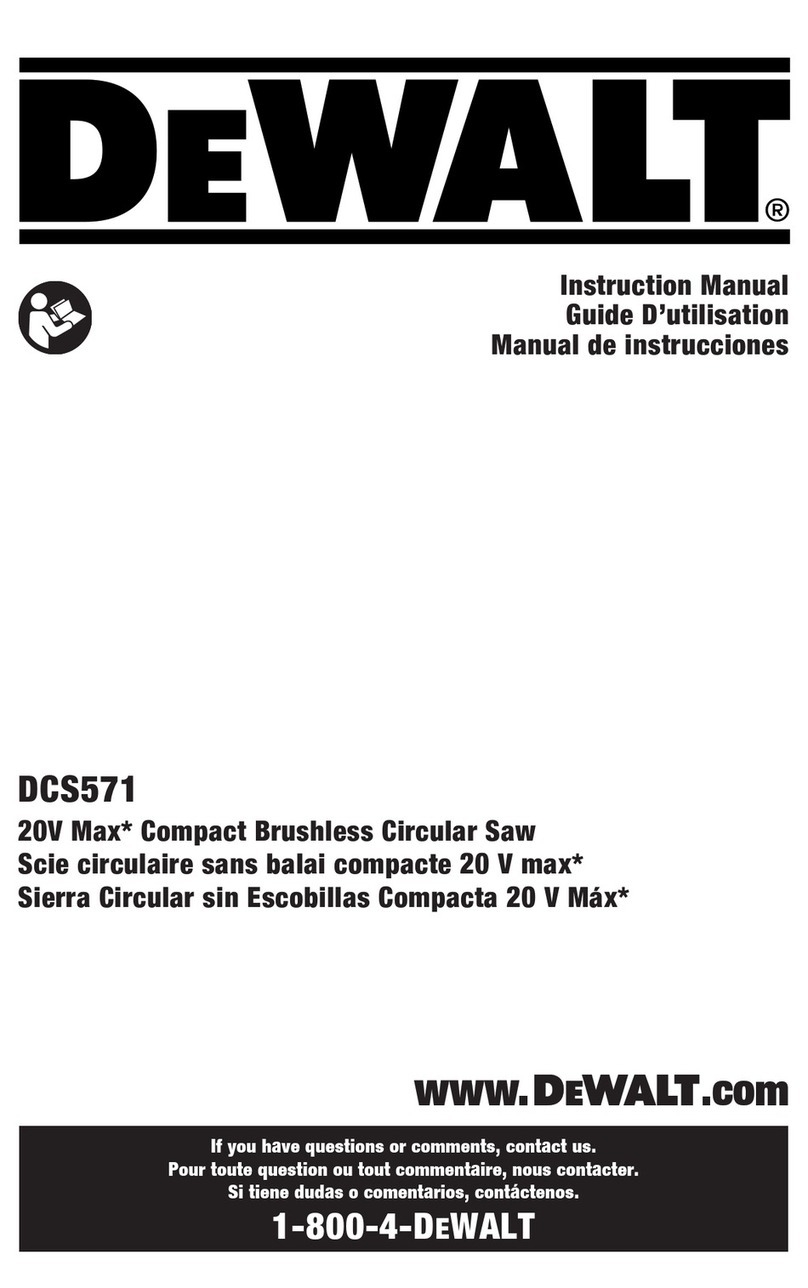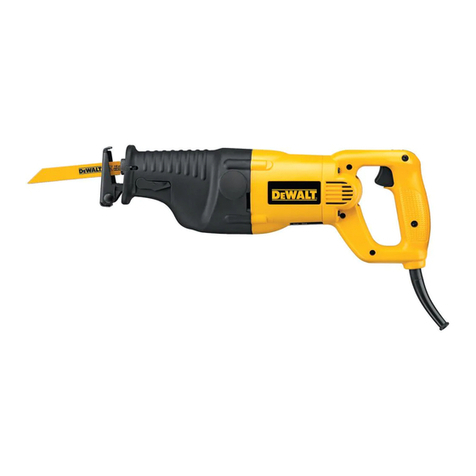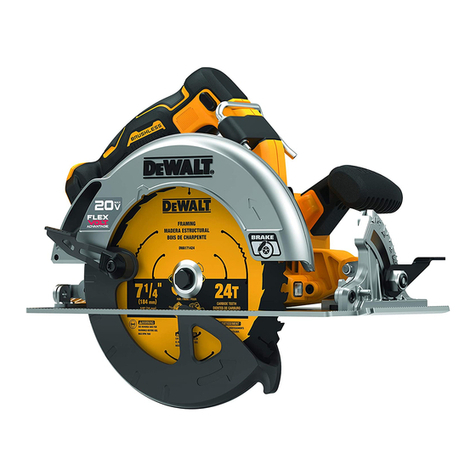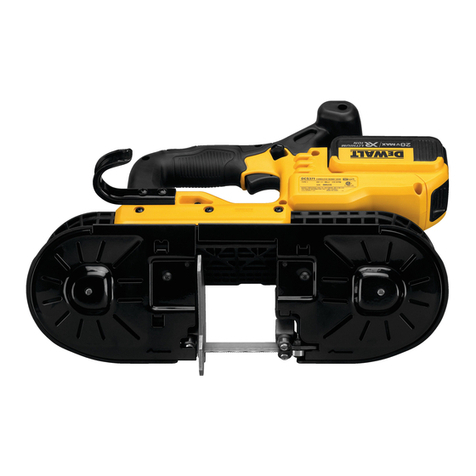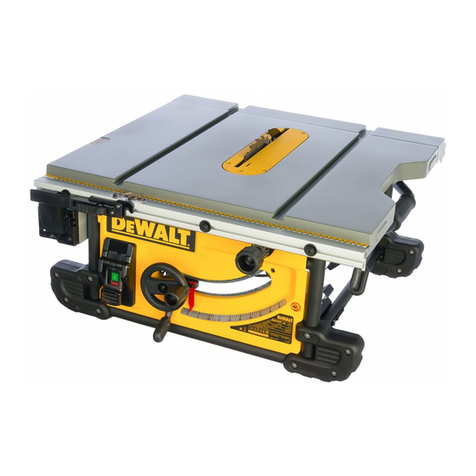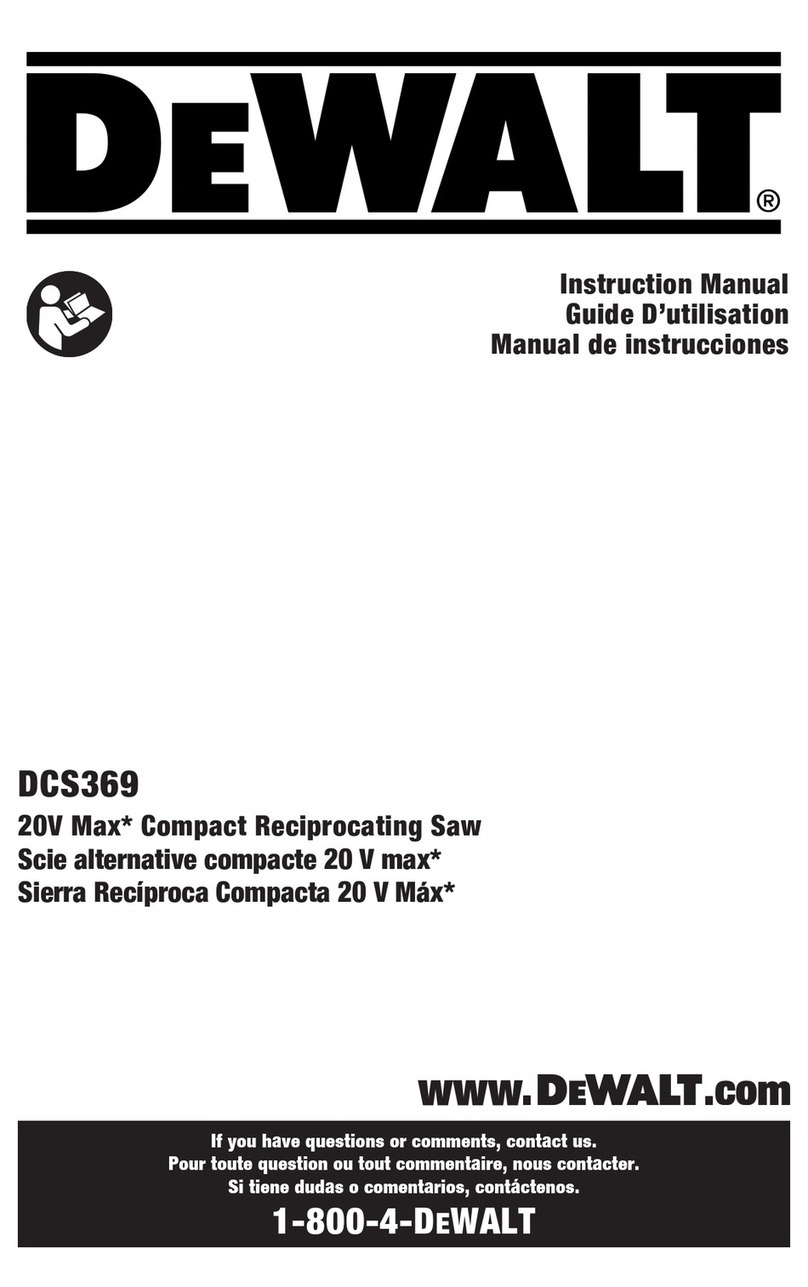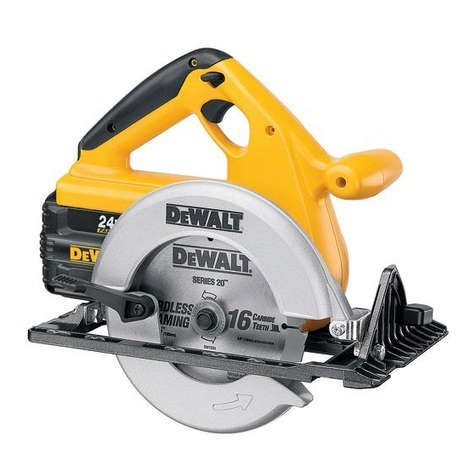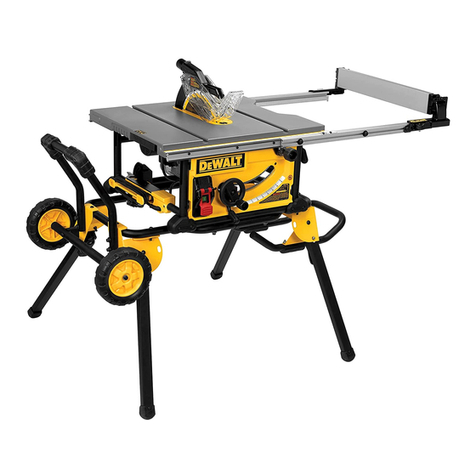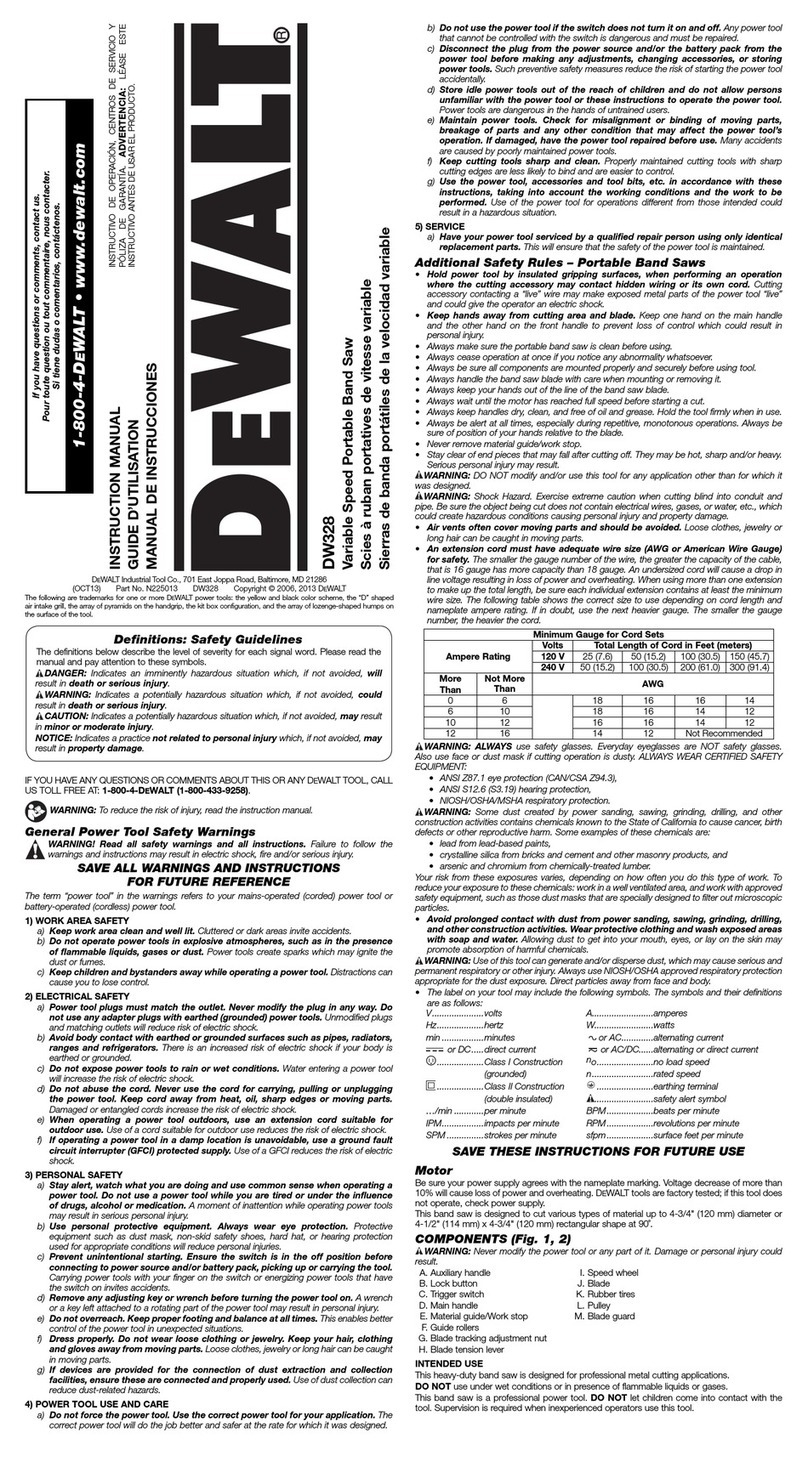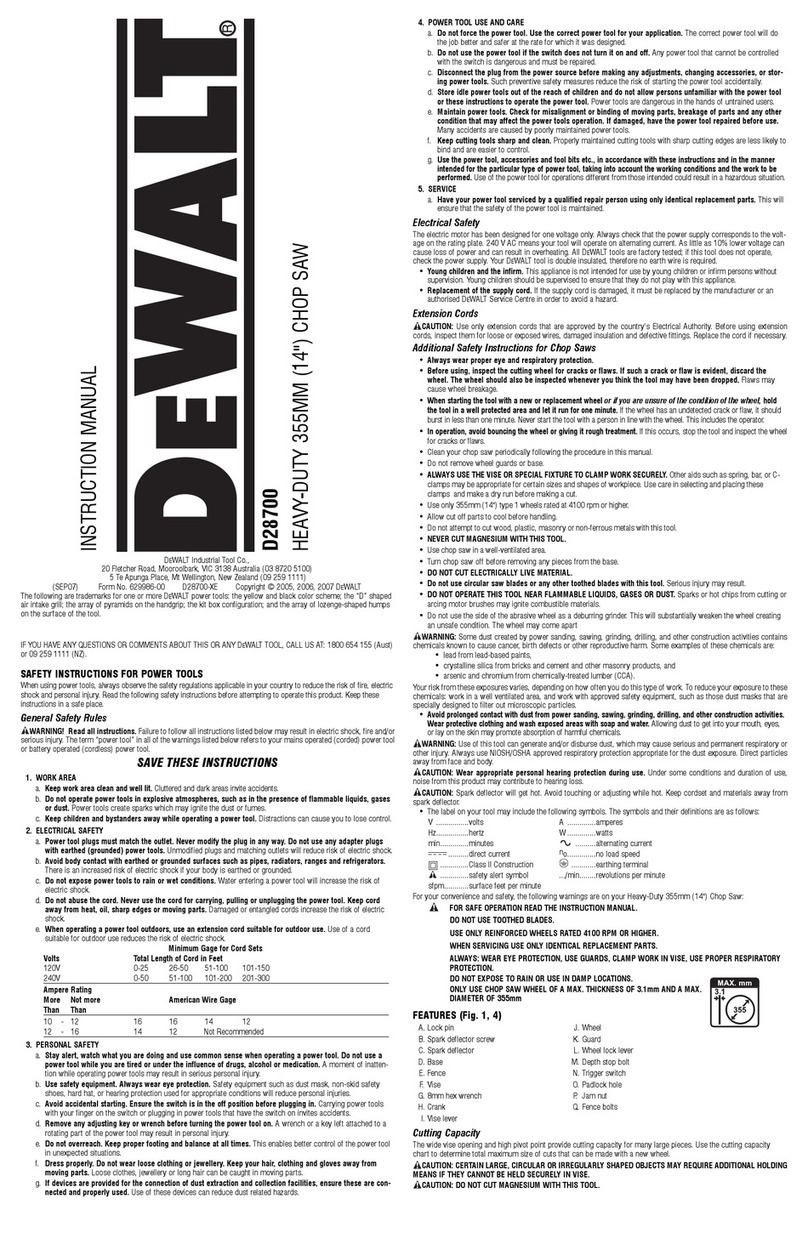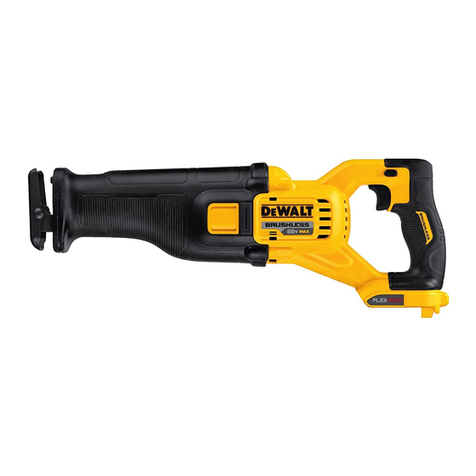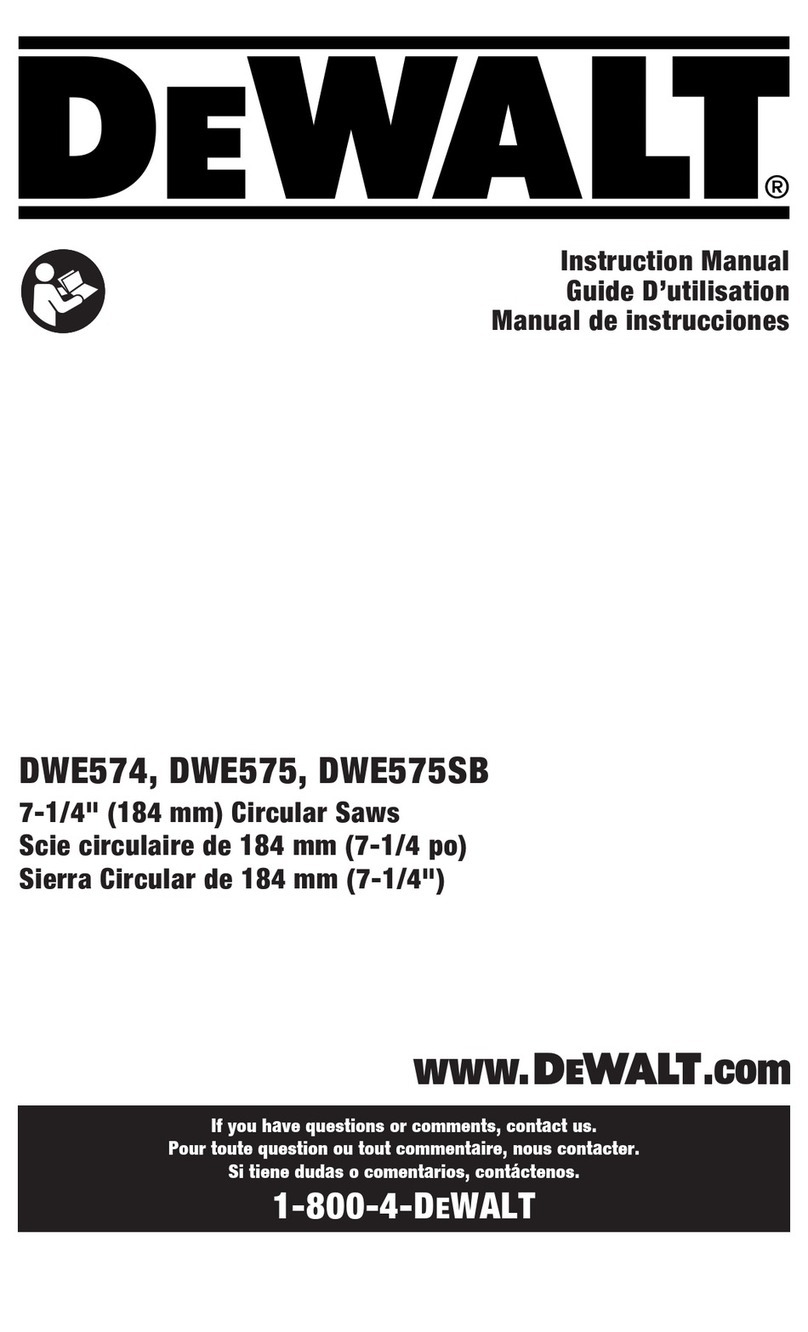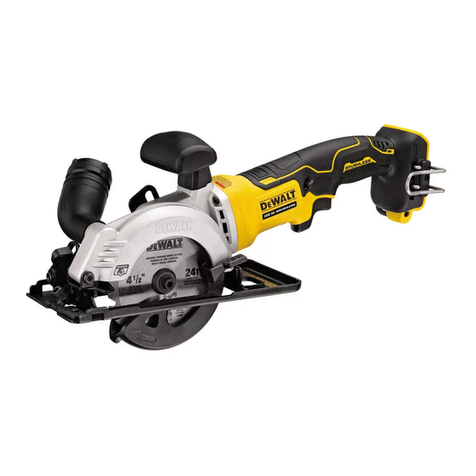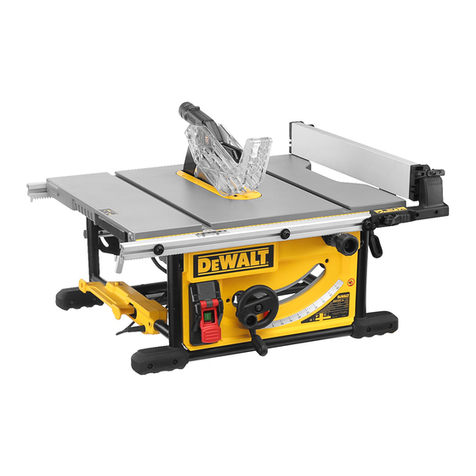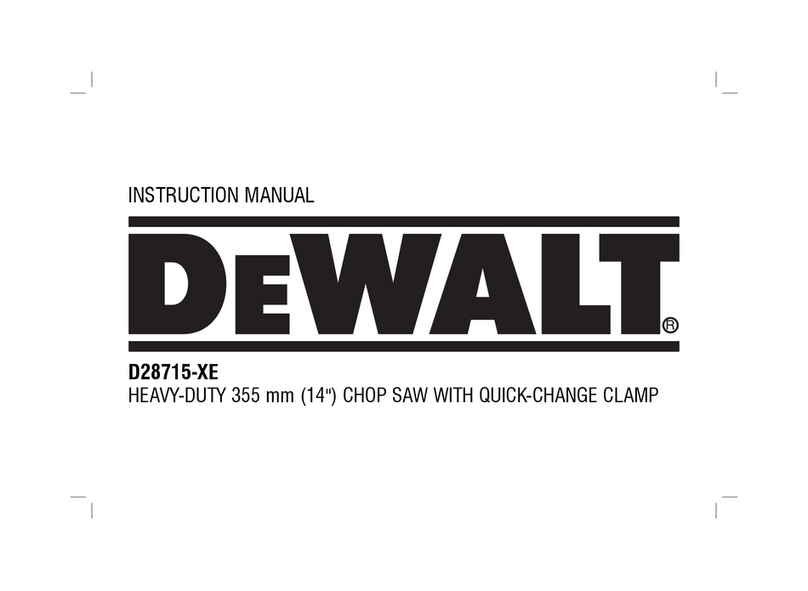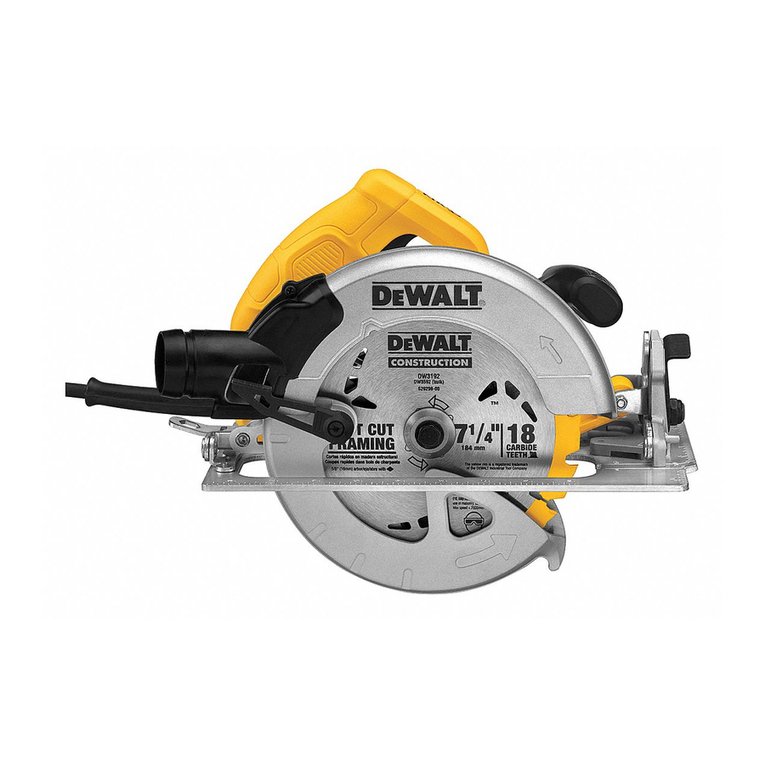English
1
IF YOU HAVE ANY QUESTIONS OR COMMENTS ABOUT THIS OR ANY DEWALT
TOOL, CALL US TOLL FREE AT: 1-800-4-DEWALT (1-800-433-9258)
Important Safety Instructions
WARNING: When using electric tools, basic safety precautions should
always be followed to reduce risk of fire, electric shock, and personal injury,
including the following:
READ ALL INSTRUCTIONS
Double Insulation
Double insulated tools are constructed throughout with two separate layers of electrical
insulation or one double thickness of insulation between you and the tool’s electrical sys-
tem. Tools built with this insulation system are not intended to be grounded. As a result,
your tool is equipped with a two prong plug which permits you to use extension cords with-
out concern for maintaining a ground connection.
NOTE: Double insulation does not take the place of normal safety precautions when oper-
ating this tool. The insulation system is for added protection against injury resulting from a
possible electrical insulation failure within the tool.
CAUTION: WHEN SERVICING, USE ONLY IDENTICAL REPLACEMENT PARTS.
Repair or replace damaged cords.
Polarized Plugs
Polarized plugs (one blade is wider than the other) are used on equipment to reduce the
risk of electric shock. When provided, this plug will fit in the polarized outlet only one way.
If the plug does not fit fully in the outlet, reverse the plug. If it still does not fit, contact a
qualified electrician to install the proper outlet. Do not change the plug in any way.
Safety Instructions For All Tools
•KEEP GUARD IN PLACE and in working order.
•REMOVE ADJUSTING KEYS AND WRENCHES. Form habit of checking to see that
keys and adjusting wrenches are removed from spindle before turning tool on.
•KEEP WORK AREA CLEAN. Cluttered areas and benches invite accidents.
•DON’T USE IN DANGEROUS ENVIRONMENT. Don’t use power tools in damp or wet
locations, or expose them to rain. Keep work area well lighted.
•KEEP CHILDREN AWAY. All visitors should be kept at a safe distance from work area.
•MAKE WORKSHOP KID PROOF with padlocks, master switches, or by removing
starter keys.
•DON’T FORCE TOOL. It will do the job better and be safer at the rate for which it was
designed.
•USE RIGHT TOOL. Don’t force tool or attachment to do a job for which it was not
designed.
•WEAR PROPER APPAREL. No loose clothing, gloves, neckties, rings, bracelets, or
other jewelry to get caught in moving parts. Nonslip footwear is recommended. Wear
protective hair covering to contain long hair.
•ALWAYS WEAR SAFETY GLASSES. Also use face or dust mask if cutting operation
is dusty. Everyday eyeglasses have only impact resistant lenses, they are NOT safety
glasses.
•SECURE WORK. Use clamps or vise when you cannot secure the workpiece on the
table and against the fence by hand or when your hand will be dangerously close to the
blade (within 6”).
•DON’T OVERREACH. Keep proper footing and balance at all times.
•MAINTAIN TOOLS WITH CARE. Keep tools sharp and clean for best and safest per-
formance. Follow instructions for lubricating and changing accessories.
•DISCONNECT TOOLS before servicing; when changing accessories such as blades,
bits, cutters, etc.
•REDUCE THE RISK OF UNINTENTIONAL STARTING. Make sure switch is in OFF
position before plugging in.
•USE RECOMMENDED ACCESSORIES. Consult the instruction manual for recommend-
ed accessories. The use of improper accessories may cause risk of injury to persons.
•NEVER STAND ON TOOL. Serious injury could occur if the tool is tipped or if the cut-
ting tool is unintentionally contacted.
•CHECK DAMAGED PARTS. Before further use of the tool, a guard or other part that is
damaged should be carefully checked to determine that it will operate properly and per-
form its intended function—check for alignment of moving parts, binding of moving
parts, breakage of parts, mounting and any other conditions that may affect its opera-
tion. A guard or other part that is damaged should be properly repaired or replaced. Do
not use tool if switch does not turn it on and off.
•NEVER LEAVE TOOL RUNNING UNATTENDED. TURN POWER OFF. Don’t leave
tool until it comes to a complete stop.
•DO NOT OPERATE ELECTRIC TOOLS NEAR FLAMMABLE LIQUIDS OR IN
GASEOUS OR EXPLOSIVE ATMOSPHERES. Motors in these tools may spark and
ignite fumes.
•EXTENSION CORDS. Make sure your extension cord is in good condition. When using
an extension cord, be sure to use one heavy enough to carry the current your product
will draw. An undersized cord will cause a drop in line voltage resulting in loss of power
and overheating. The following table shows the correct size to use depending on cord
length and nameplate ampere rating. If in doubt, use the next heavier gage. The small-
er the gage number, the heavier the cord.
Minimum Gage for Cord Sets
Volts Total Length of Cord in Feet
120V 0-25 26-50 51-100 101-150
240V 0-50 51-100 101-200 201-300
Ampere Rating
More Not more AWG
Than Than
0-6 18 16 16 14
6 - 10 18 16 14 12
10 - 12 16 16 14 12
12 - 16 14 12 Not Recommended
Additional Safety Rules For Miter Saws
CAUTION: FAILURE TO HEED THESE WARNINGS MAY RESULT IN PERSONAL
INJURY AND SERIOUS DAMAGE TO THE SAW.
• DO - Protect electric supply line with at least a 15 ampere time-delay fuse or a circuit
breaker.
• DO - Make certain the blade rotates in the correct direction and that the teeth at the
bottom of the blade are pointing to the rear of the miter saw.
• DO - Be sure all clamp handles are tight before starting any operation.
• DO - Be sure all blade and clamp washers are clean and recessed sides of collars are
against blade. Tighten arbor screw securely.
• DO - Keep saw blade sharp.
• DO - Keep motor air slots free of chips and dirt.
• DO - Use blade guards at all times.
• DO - Keep hands out of path of saw blade.
• DO - Shut off power, disconnect cord from power source and wait for saw blade to stop
before servicing or adjusting tool.
• DO - Support long work with an outboard tool rest.
• DO NOT - Attempt to operate on anything but designated voltage.
• DO NOT - Operate unless all clamp handles are tight.
• DO NOT - Use blades larger or smaller than those which are recommended.
• DO NOT - Wedge anything against fan to hold motor shaft.
• DO NOT - Force cutting action. (Stalling or partial stalling of motor can cause major
damage. Allow motor to reach full speed before cutting.)
